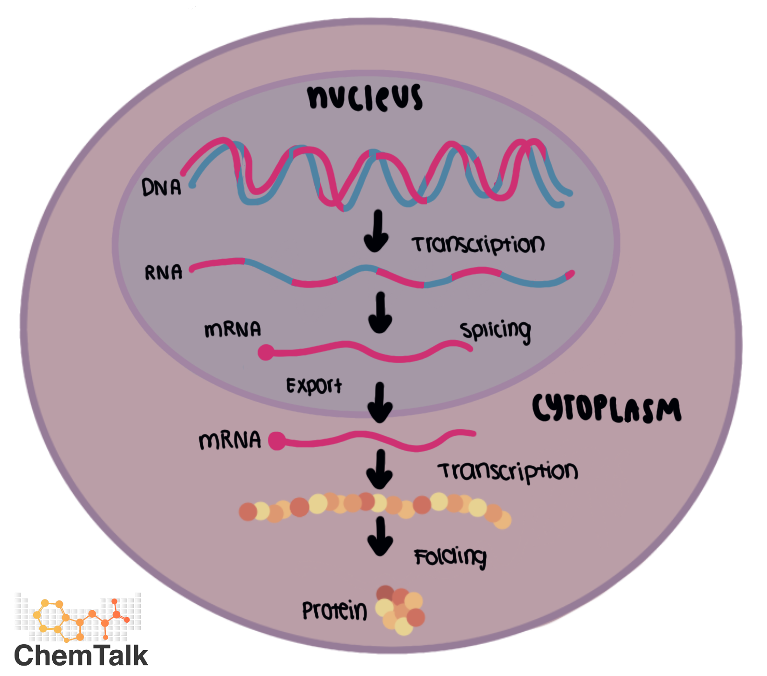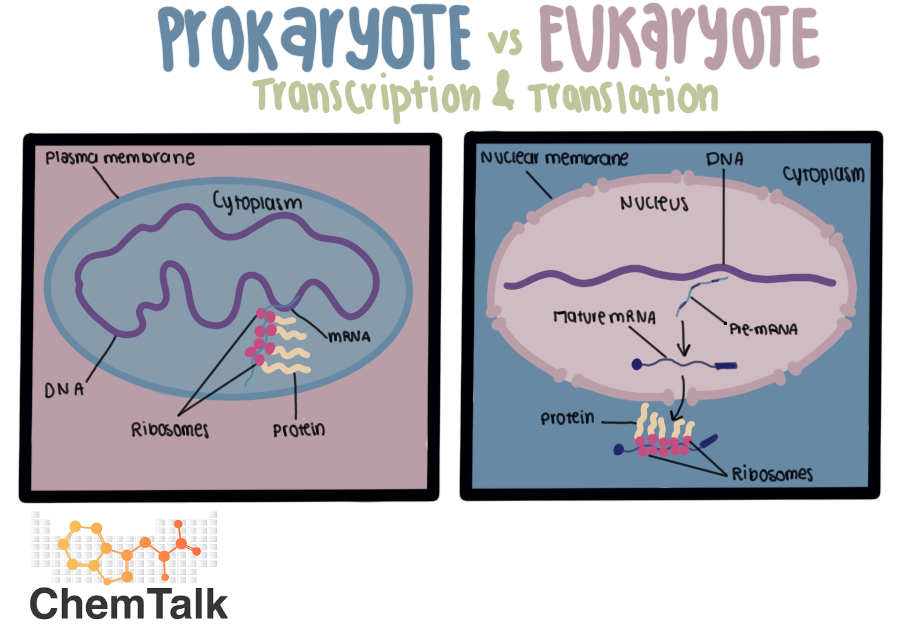Core Concepts
This article will help you understand how the transcription of RNA molecules, which code for proteins or perform other roles as non-coding RNA molecules, causes gene expression. After reading the article you will know all the basis of gene expression.
Related Topics
Gene Expression
Gene expression is the conversion of a gene’s information into a function. Transcription, which involves translating RNA molecules that code for proteins or non-coding RNA molecules with various functions, mostly perform this function.
Mechanism
The mechanism of gene expression starts on the second step of the Central Dogma of Biology, which is transcription, and concludes with the synthesis and folding of a protein, following these steps:
- Transcription: First, a section of DNA is used to create an RNA template. An enzyme known as RNA polymerase “reads” the DNA segment, resulting in the production of a complementary strand of RNA. Meanwhile, in the complementary RNA strand, all the thymine nucleotide have been swapped for uracil.
- Processing: Secondly, cells create the mature messenger RNA (mRNA), which can be used for translation, by further modifying the initial RNA transcript. During splicing, the cell cuts out the non-coding portions of the transcript (introns) to leave only the coding regions (exons) in the mRNA.
- Non-Coding RNA maturation: Cells synthesize RNA’s non-coding regions (ncRNA) as precursors, which then undergo further processing. For instance, the cell may translate these sections into pre-ribosomal RNA (pre-rRNA), which it would subsequently cleave into ribosomal RNA (rRNA).
- RNA export: Afterward, the cell moves most of the mature RNA from the nucleus to the cytoplasm. Although certain RNAs have functions in the nucleus, the cell transports all RNAs involved in protein synthesis into the cytosol through pores in the nucleus.
- Translation: mRNA contains the information required to code for proteins. Meanwhile, an amino acid-carrying transfer RNA (tRNA) has a binding site per three base pairs on the mRNA. A ribosome then forms a basic protein chain by connecting the amino acids in a chain.
- Protein folding: Finally, using enzymes referred to as chaperones, the lengthy chain of amino acids folds to create a three-dimensional structure. Hence, this three-dimensional structure represents the finished and functioning version of the protein.

Regulation of Gene Expression
Gene regulation affects when, where, and how much genes express. The process involves using various methods, such as regulation proteins and chemical modifications to DNA, which can be intricate. Gene control determines an organism’s ability to react to environmental changes.
Prokaryotes
Single-celled organisms without a cell nucleus, known as prokaryotic organisms, allow their DNA to move freely in the cytoplasm of the cell. They create a protein by simultaneously performing transcription and translation. The more of the resultant protein is no longer required once transcription is complete. Therefore, prokaryotic cells regulate the type and quantity of protein produced primarily by regulating DNA transcription. The cell carries out the remaining actions automatically. When more protein is needed, more transcription takes place. Thus, transcriptional regulation is primarily responsible for controlling gene expression in prokaryotic cells.
Eukaryotes
Eukaryotic cells are more complex than prokaryotic cells due to the presence of internal organelles. During transcription, eukaryotic cells convert DNA into RNA within the nucleus, and then ribosomes in the cytoplasm convert RNA into protein. The nuclear membrane physically separates the processes of transcription and translation, with transcription only occurring inside the nucleus and translation taking place outside in the cytoplasm. Regulating gene expression is possible at every step of this process.
Epigenetic regulation may occur when DNA uncoils and loosens from nucleosomes to bind transcription factors. Transcriptional regulation takes place during RNA production. Post-transcriptional regulation happens when RNA is processed and exported to the cytoplasm. Translation regulation occurs during RNA translation into protein. Post-translational regulation takes place during production of the protein.

Gene Expression Quantification
The conventional approach for assessing gene expression is to quantify the amount of the gene product, which is typically a protein. For measuring proteins, two common techniques are Western blotting and the enzyme-linked immunosorbent assay (ELISA). However, researchers can also use a technique called Northern blotting to measure mRNA quantity and estimate mRNA expression levels.
Reverse transcription followed by quantitative polymerase chain reaction is another technique for measuring mRNA. In this method, researchers convert an mRNA template into a DNA template through reverse transcription. Amplification of the matching DNA template follows. As the DNA amplification process progresses, hybridization probes generate varying amounts of fluorescence, which researchers can use to determine the initial number of mRNA copies.
Further Reading
You can watch this video to complement your knowledge on the topic or read the following articles:

